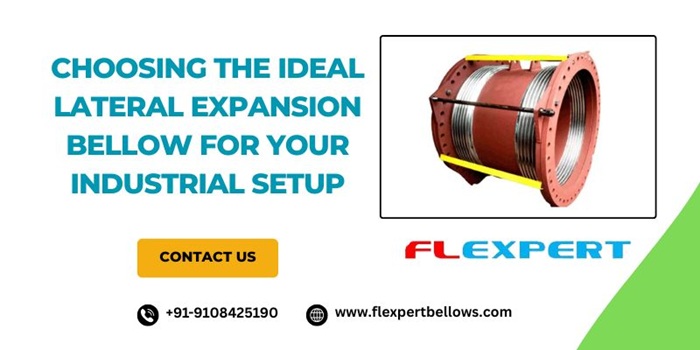In an industrial setup where heat, pressure, and vibration are a daily affair, even the smallest component can make or break system efficiency. One such unsung hero is the lateral expansion bellow — a flexible yet resilient connector that ensures seamless operation. But how do you select the right one for your plant’s needs? Let’s break it down step by step.
Understanding What a Lateral Expansion Bellow Does
Before diving into specifications, it’s worth knowing what this component actually does. In simple terms, a lateral expansion bellow absorbs side movements between two fixed points in a pipeline. It helps manage thermal expansion, vibration, and slight misalignments — all of which can cause pipe stress or fatigue over time. A reputed lateral expansion bellow manufacturer in India typically designs these products for industries like petrochemicals, power generation, and water treatment, where durability and flexibility are crucial.
Key Factors to Consider Before Selection
Choosing the right bellow isn’t just about matching size and shape. Every industry has different operating conditions, so it’s important to evaluate your system’s exact needs. Here are the top parameters to assess:
1. Operating Pressure and Temperature
Your expansion bellow should withstand the maximum pressure and temperature of your pipeline. For instance, high-pressure steam lines need bellows with reinforced layers of stainless steel or Inconel. Always review data sheets and ensure your selection meets safety margins recommended by standards like ASTM International.
2. Movement Absorption
“Lateral movement” might sound simple, but it often involves combined stresses — axial, angular, and torsional. Overlooking this can lead to premature failure. Ideally, choose a bellow that can handle your required lateral offset while compensating for minor axial shifts too.
3. Material Compatibility
The medium flowing through the pipe determines what your bellow should be made of. For example:
- Stainless steel for corrosive or high-temperature environments
- Rubber or PTFE for chemical processing plants
- Composite layers for applications requiring high flexibility with moderate pressure
Never compromise material quality, as inferior metals or coatings can degrade faster and increase downtime.
Why Design Customization Matters?
No two plants are identical, and that’s where customization enters the picture. A reliable lateral expansion joint manufacturer in India can design bellows tailored to your pressure cycles, load patterns, and installation constraints. You might need multi-ply bellows for flexibility, tie rods for controlled movement, or external covers for debris protection. A customized design not only extends product life but also ensures a safer and more efficient pipeline system.
Installation and Maintenance Best Practices
Even the most advanced bellow can fail if installed incorrectly. Here are a few practical tips engineers often overlook:
- Avoid torsion: Never twist bellows during installation. It can cause cracks over time.
- Use proper guides and anchors: Unanchored systems can cause axial overload.
- Inspect regularly: Visual checks for deformation, leakage, or corrosion can prevent costly shutdowns.
According to a report by energy.gov, predictive maintenance can reduce unplanned industrial downtime by up to 30%, making regular inspections an investment rather than an expense.
Common Mistakes to Avoid
Many maintenance teams unknowingly make errors that lead to early wear and tear. Some of the most frequent include:
- Choosing a bellow with incorrect movement capability.
- Overlooking pressure thrust during design calculation.
- Skipping protective covers in outdoor installations.
Each of these mistakes can compromise both safety and performance. A thorough design review can easily prevent them.
FAQs About Lateral Expansion Bellows
1. What is the lifespan of a lateral expansion bellow?
It depends on operating conditions and maintenance. Typically, a high-quality stainless-steel bellow can last 8–15 years under normal stress cycles.
2. Can I replace a damaged bellow with a standard one?
It’s not recommended. Always match design specifications, material grade, and pressure ratings to ensure compatibility and safety.
3. How often should bellows be inspected?
Visual inspections should occur every 6–12 months, and detailed checks annually — especially in systems with fluctuating temperature or pressure.
4. Are there cost-effective options without compromising quality?
Yes. Many Indian manufacturers offer optimized designs with multiple plies and reinforced edges that balance cost and performance effectively.
Final Thoughts
Selecting the right lateral expansion bellow isn’t about ticking boxes — it’s about engineering foresight. The right component absorbs movement, reduces stress, and safeguards the entire pipeline. Partnering with a trusted Indian manufacturer ensures both quality and reliability. When in doubt, always consult experienced engineers and choose products tested to global standards — your system’s longevity depends on it.



